By December large flocks of waterfowl descend on a number of sites in the northern and central parts of Florida.
In Florida, as in most states, winter is the best season to observe the greatest variety of birds coming to backyard feeders. The highest diversity of wintering land birds can be found in the northern part of the state.
For a few bird species, winter is the time when they nest and raise young. This applies particularly to bald eagles, which can often lay eggs as early as November, with great horned owls following closely behind them in January and February and then ospreys which nest in February.
This past February I wanted to scout the Northern part of Florida from Orlando to the East Coast for a Bird Photography Workshop in Feb. 2022. I put in numerous hours and drove hundreds of miles looking for great spots for students to be able to photograph. I’m happy to report I came up with some great locations for The Florida Migratory Birds Workshop.
The Great Egret is a large, all white, wading bird common in South Florida. Body length to 39 inches, with a 55 inch wingspan.
One of several white members of the Ardeidae (Heron) family present in Florida the Great Egret is distinguished from the white morph of the Great Blue Heron by having black legs and feet, the Snowy Egret has a black bill and yellow feet and the Reddish Egret, (white morph) which has a black tipped bill and smaller stature. Breeding individuals have long plumes on their backs.
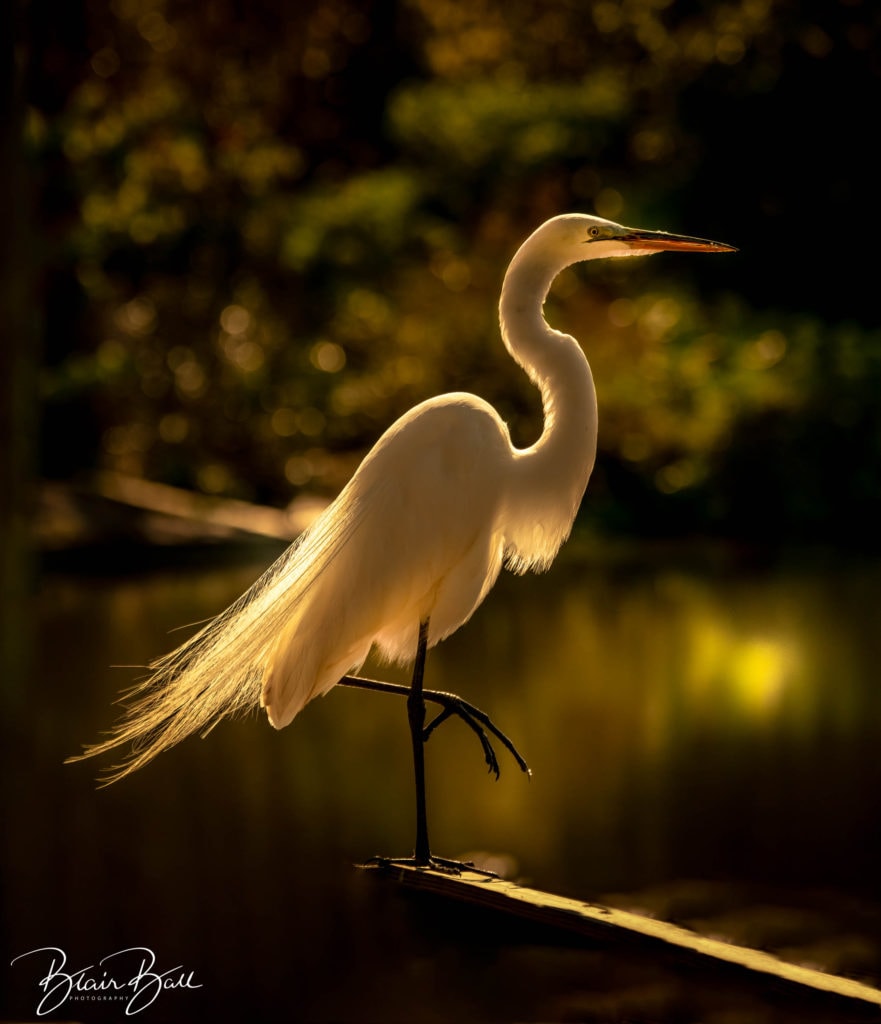
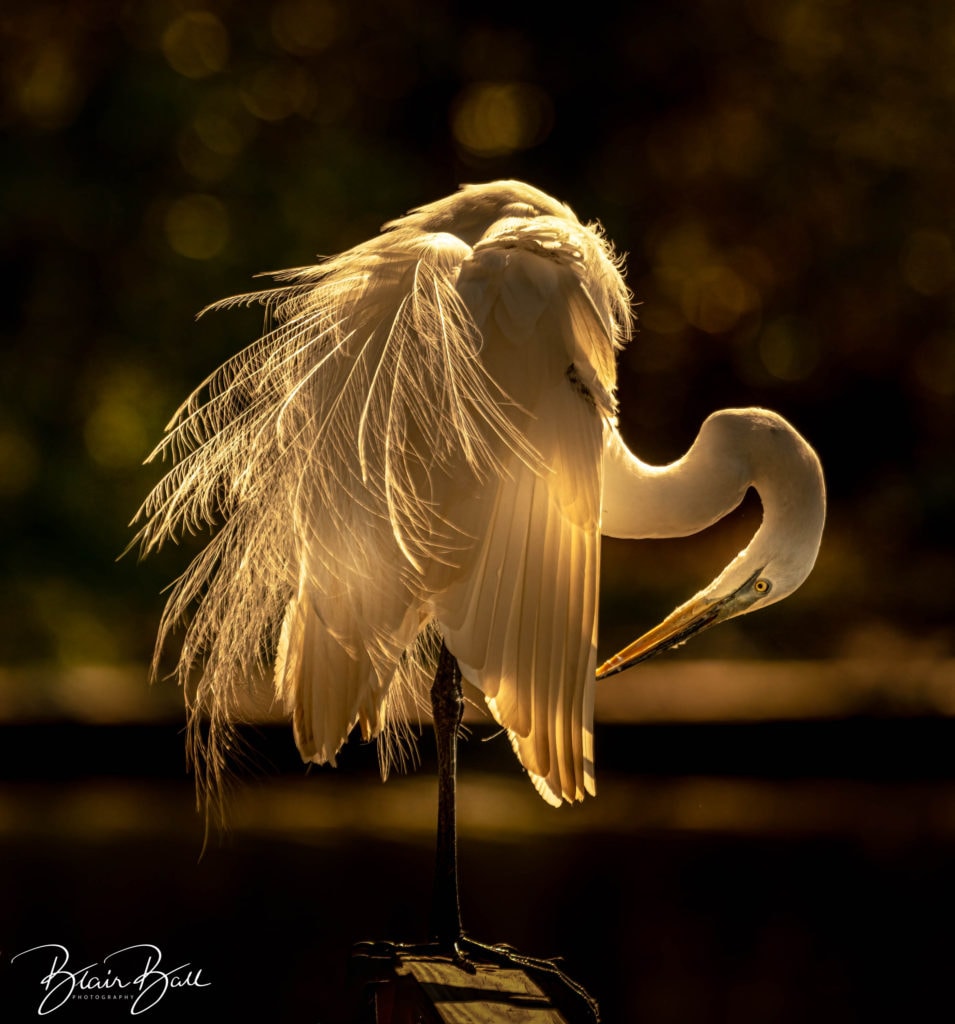
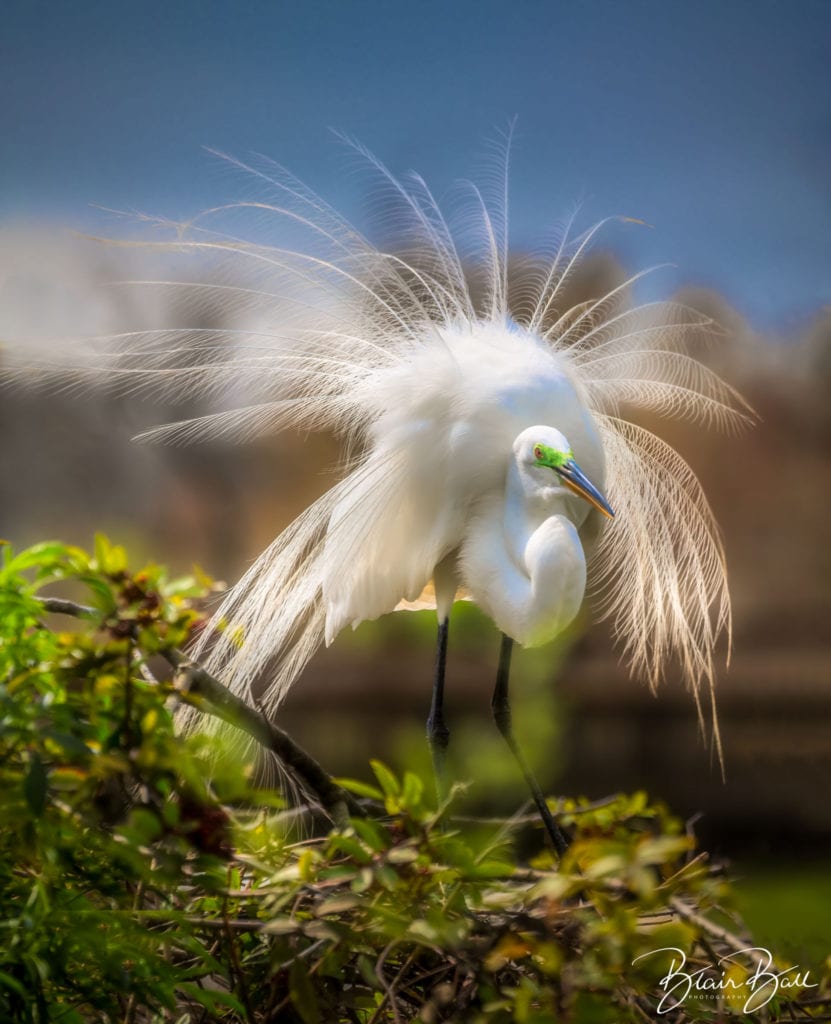
Snowy Egrets can be found in marshes, swamps, ponds, lakes, rivers and tidal flats.
Snowy Egrets were hunted almost to extinction in the late 1800’s and early 1900’s for their breeding plumes, which were used to decorate ladies hats. They rebounded quickly after being protected under the Migratory Bird Treaty Act of 1918.
The Snowy Egret has a 36 inch wingspan, stands about 2 feet tall and is of slender build, has snow white plumage with a black bill, black legs and yellow feet and lores.
During breeding season this Egret develops long, delicate plumes on their head, neck and back. The yellow parts get a reddish tint during courtship also. Snowy Egrets feed on shrimp, fish, crabs, crayfish, insects, snakes, small frogs.
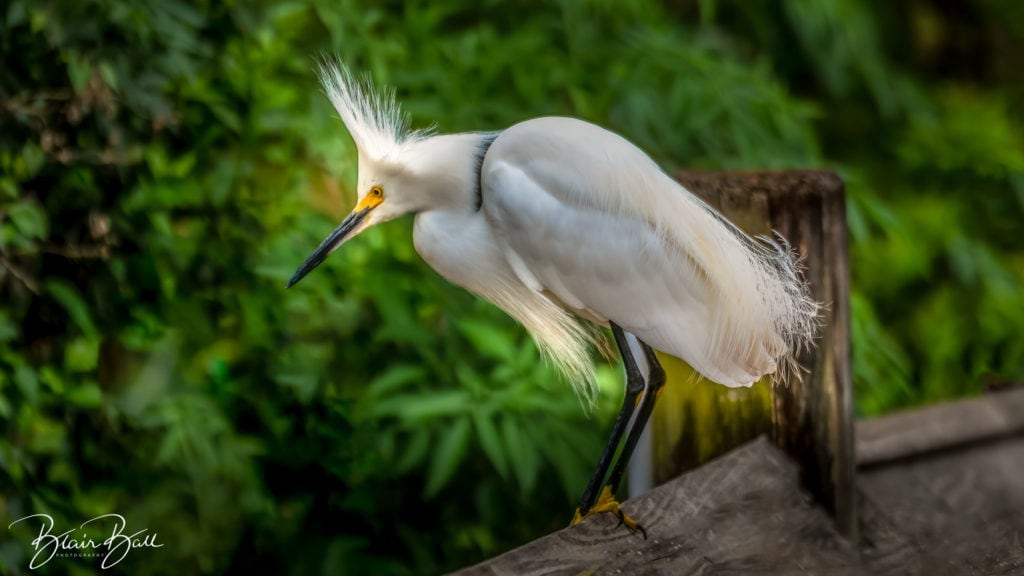
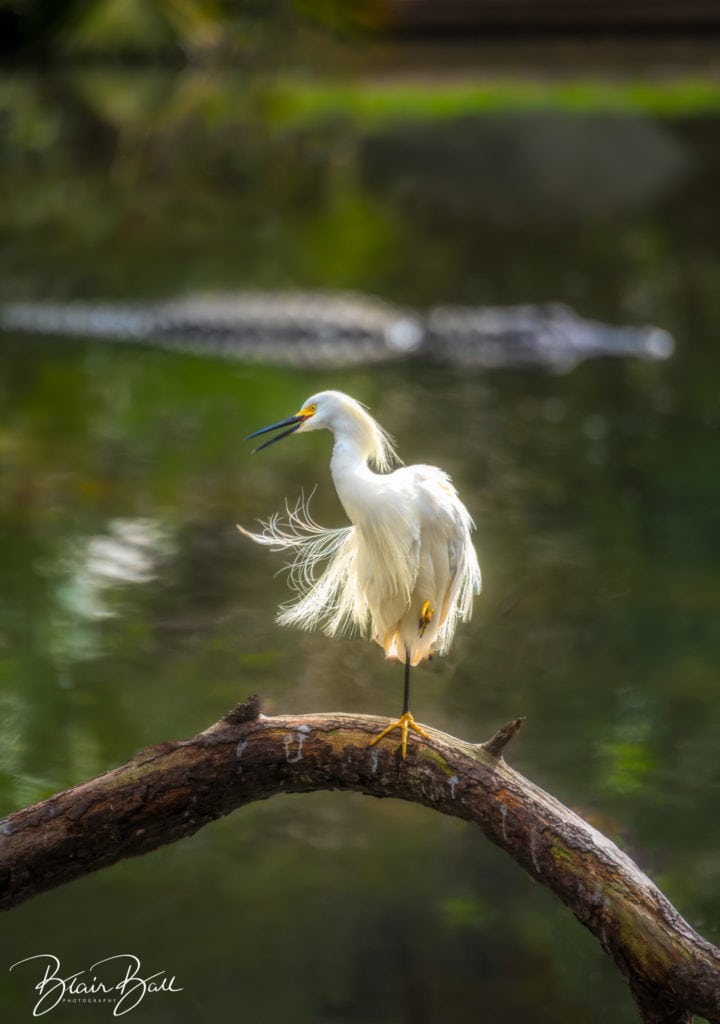
White Ibis are often seen foraging in the wild for crustaceans & frogs, probing mudflats with their long, red, downcurved bill. Alternately, a frequent visitor to golf courses and cultivated lawns, usually in groups.
Adults are all white except for black wingtips, immature birds are a muddy brown with a white belly. The White Ibis has a body length to 26 inches, long legs and bill are red, flies with neck extended.

Flamingos have been considered a non-native, invasive species in Florida for much of the last century. Now there is an effort to declare them — once and for all — native to Florida.
Flamingos were wiped out by hunting in the late 1800s, and most of those found in Florida today are captive. Declaring them native to the state would allow for efforts to restore their population to South Florida.
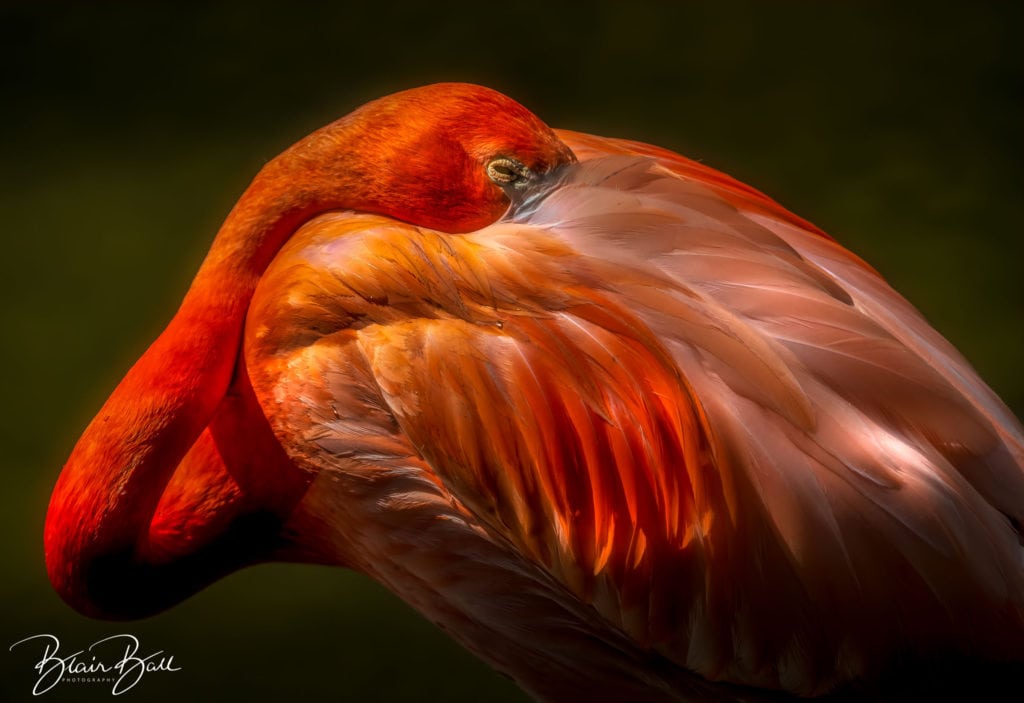
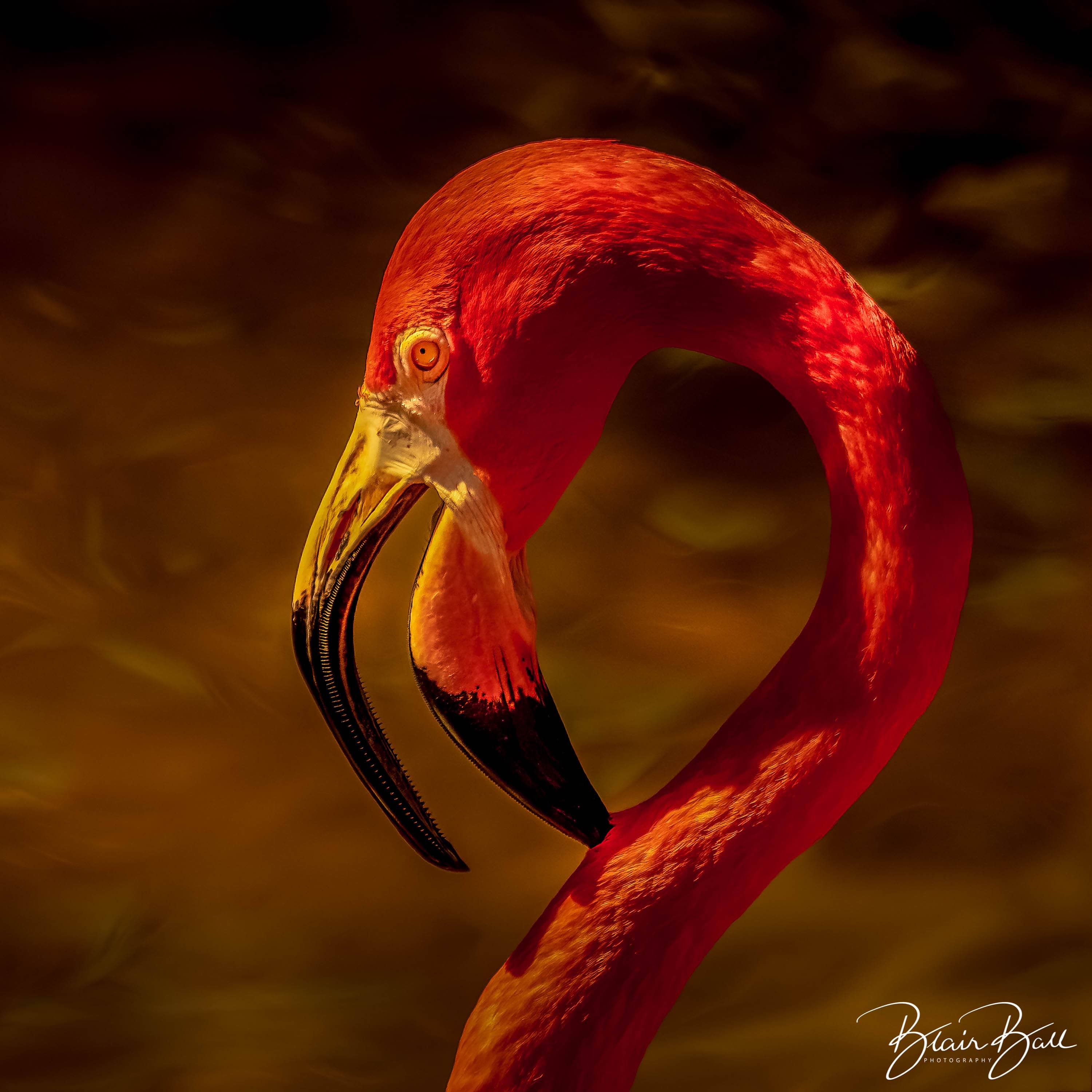
Wood Storks are up to 35 inches long with an average wingspan of 66 inches.
The adults head and neck lack feathers, showing the black skin underneath. They have a long, thick, and slightly curved bill.
Considered an wetland indicator species, it has evolved to rely on very specific conditions.
A healthy population indicates that the habitat it is associated with is also considered healthy. Since it requires approximately 400 pounds of food to support itself and its hatchlings, the Wood stork times its breeding to coincide with the dry season when the receding waters of freshwater marshes force its prey fish into concentrated areas.
Feeling around with its long beak in shallow waters the Wood stork snaps up fish and other small aquatic animals.
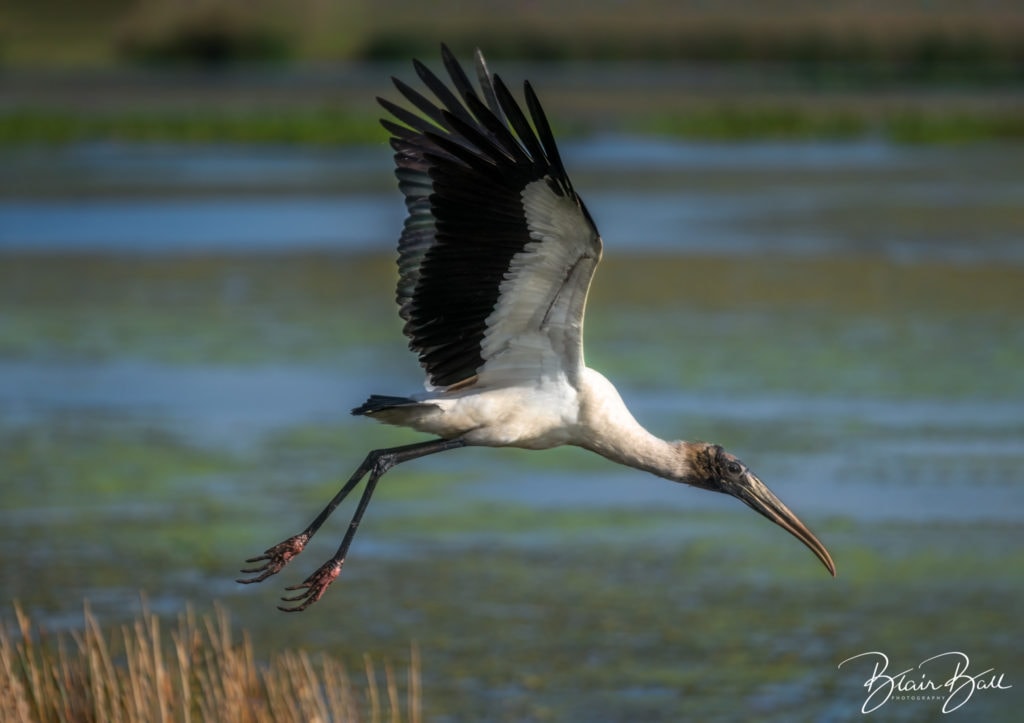
SUMMARY
Florida Migratory Birds are great subjects for photographing. I was able to get up close at several locations to capture these migratory birds in their nature habitat.
February is a great month to head to warm weather in Florida. The birds are plentiful during this dry season as well, offering photographers great opportunities.
- FLORIDA’S MIGRATORY BIRDS RARELY FAIL TO LEAVE AN IMPRESSION ON THE BEHOLDER. THIS IS ESPECIALLY TRUE DURING THE WINTER DRY MONTHS WHERE THEY ROAM FREELY MAKING FOR GREAT PHOTO OPPORTUNITIES. ADD DEEP BLUE SKIES, MIXED WITH WHITE PUFFY CLOUDS AND WATER MAKING IT THE NATURE PHOTOGRAPHERS’ DREAM.
Stay tuned as I will be choosing a date in February 2022, and posting it on my website along with my other workshops.
Photos by Blair Ball Photography
Call or email me to assist in telling your story. Our list of services.
Be sure to check out our upcoming workshops.
bballphoto@comcast.net | 901-378-7450

